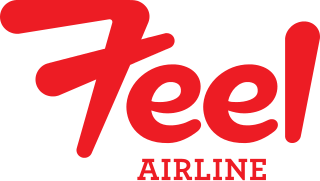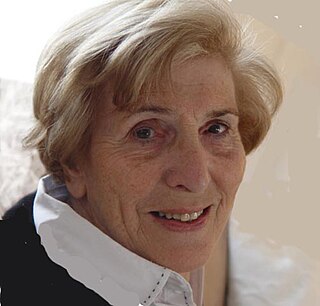
Norsk Hydro ASA is a Norwegian aluminium and renewable energy company, headquartered in Oslo. It is one of the largest aluminium companies worldwide. It has operations in some 50 countries around the world and is active on all continents. The Norwegian state owns 34.3% of the company through the Ministry of Trade, Industry and Fisheries. A further 6.5% is owned by Folketrygdfond, which administers the Government Pension Fund of Norway. Norsk Hydro employs approximately 35,000 people. Eivind Kallevik has been the CEO since May, 2024, following Hilde Merete Aasheim.

Rjukan is a town in Tinn Municipality in Telemark county, Norway. The town is also the administrative centre of Tinn Municipality. The town is located in the Vestfjorddalen valley, between the lakes Møsvatn and Tinnsjå. The municipal council of Tinn declared town status for Rjukan in 1996. The town is located about 10 kilometres (6.2 mi) to the west of the village of Miland and about 20 kilometres (12 mi) to the northwest of the village of Tuddal.

The Norwegian heavy water sabotage was a series of Allied-led efforts to halt German heavy water production via hydroelectric plants in Nazi Germany-occupied Norway during World War II, involving both Norwegian commandos and Allied bombing raids. During the war, the Allies sought to inhibit the German development of nuclear weapons with the removal of heavy water and the destruction of heavy-water production plants. The Norwegian heavy water sabotage was aimed at the 60 MW Vemork power station at the Rjukan waterfall in Telemark.

Vemork is a hydroelectric power plant outside the town of Rjukan in Tinn Municipality in Telemark county, Norway. The plant was built by Norsk Hydro and opened in 1911, its main purpose being to fix nitrogen for the production of fertilizer. At opening, it was the world's largest power plant with a capacity of 108 megawatts (145,000 hp).
Linx AB was a railway company which operated inter-Scandinavian passenger trains between 2001 and 2004. Established as a joint venture between the Norwegian State Railways (NSB) and the Swedish state-owned SJ, Linx operated the routes from Oslo, Norway, to Stockholm, Sweden, and from Oslo via Gothenburg, Sweden, to Copenhagen, Denmark. Services were provided up to ten times per day. However, slow speeds caused by curvy infrastructure in Norway, combined with competition from low-cost airlines, caused the company to lose money, and eventually grounded operations. The services were taken over by NSB and SJ. The main rolling stock were eleven X2 electric multiple units, although it used SJ Rc-hauled trains on the Gothenburg–Oslo service. The company was based in Gothenburg.

Lufttransport is a Norwegian helicopter and fixed-wing airline that operates primarily air ambulance helicopters and planes for the Norwegian and Swedish governments. In addition the airline offers services including surveillance for the Norwegian Coast Guard, transport of ship pilots and scheduled air transport in the Norwegian territory of Svalbard.

YX Energi, formerly known as Hydro Texaco, is a Norwegian and Danish gas station chain formed after the merge of the Hydro and Texaco gas station chains in 1995. In 2006 the company was bought by Reitangruppen and incorporated into their chain including the implementation of 7-Eleven brand on the service stations. Uno-X and Rema Bensin are low-cost brand names of YX.

The Rjukan Line, at first called the Vestfjorddal Line, was a 16-kilometre (10 mi) Norwegian railway line running through Vestfjorddalen between Mæl and Rjukan in Telemark county. The railway's main purpose was to transport chemicals from Norsk Hydro's plant at Rjukan to the port at Skien, in addition to passenger transport. At Mæl the wagons were shipped 30 kilometres (19 mi) on the Tinnsjø railway ferry to Tinnoset where they connected to the Tinnoset Line. The Rjukan Line and the ferries were operated by Norsk Transport, a subsidiary of Norsk Hydro.

SF Hydro was a Norwegian steam powered railway ferry that operated in the first half of the 20th century on Lake Tinn in Telemark. It connected with the Rjukan Line and Tinnoset Line, at Mæl and Tinnoset, operating between 1914 and 1944. The combined track and ferry service was primarily used to transport raw materials and fertilizer from Norsk Hydro's factory at Rjukan to the port in Skien. It was the target of a Norwegian operation on 20 February 1944, when resistance fighters sank the ferry in the deepest part of Lake Tinn to prevent Nazi Germany from receiving heavy water.

Equinor ASA is a Norwegian state-owned multinational energy company headquartered in Stavanger, Norway. It is primarily a petroleum company operating in 36 countries with additional investments in renewable energy. In the 2020 Forbes Global 2000, Equinor was ranked as the 169th-largest public company in the world. In 2023, the company was ranked 52nd in the same list. As of 2021, the company has 21,126 employees.

Hydro Oil & Gas is a defunct division of Norsk Hydro that operated within the oil and gas industry. On October 1, 2007 it merged with Statoil to form the new corporation StatoilHydro.

Hydro was a chain of fuel stations throughout Sweden owned by Statoil. The chain had more than 500 stations, as well as some unmanned Uno-X stations. The company also operated in retailing natural gas, electricity and heating oil.
1-2-3 is an unmanned fuel station chain in the Nordic and Baltic regions.
Events in the year 1905 in Norway.

Norsk Hydro Rjukan is an industrial facility operated by Norsk Hydro at Rjukan in Tinn, Norway, from 1911 to 1991. The plant manufactured chemicals related to the production of fertilizer, initially potassium nitrate from arc-produced nitric acid and later ammonia, hydrogen, and heavy water. The location was chosen for its vicinity to hydroelectric power plants built in the Måna river.

The Skovshoved Petrol Station is a historic, still-operating filling station in Skovshoved at the northern outskirts of Copenhagen, Denmark. First opened in 1936, it was designed by Arne Jacobsen and is an example of the functionalist style typical of the time. It is Class A listed and was thoroughly restored in 2002. The filling station was originally commissioned by Texaco but is now operated by Uno-X.

Feel Air was a Norwegian low-cost airline that had announced plans to operate intercontinental flights from Oslo Airport, Gardermoen in Norway and Stockholm Arlanda Airport in Sweden. The plans were launched on 2 October 2009 and the announced starting date was spring 2011 with Airbus A330-200 aircraft. Services would be from both Oslo and Stockholm to John F. Kennedy International Airport in New York City, United States and Suvarnabhumi Airport in Bangkok, Thailand.

Tulla (Bella) Blomberg Ranslet is a Norwegian painter and sculptor.

Anna Colbjørnsdatter Arneberg (1667–1736) was a Norwegian national heroine who was most known for her participation in the Battle of Norderhov during the Great Northern War.

Uno-X Mobility is a Norwegian UCI ProTeam established in 2016, as a continuation of the earlier Team Ringeriks-Kraft. Uno-X Mobility was initially established as a cooperation between Uno-X, Ringerike Sykkelklubb og Lillehammer Cykleklubb, and had its inaugural season in 2017. The team is sponsored by fuel station chain Uno-X, which is part of the Reitan conglomerate.

















